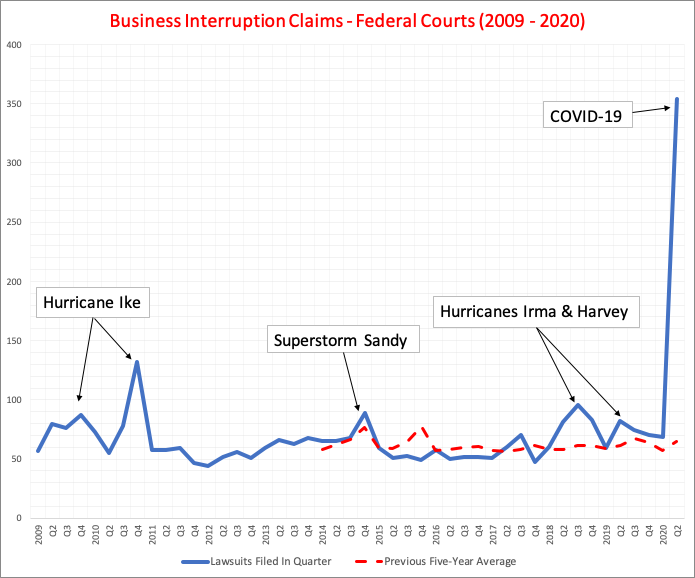
Writing an effective, persuasive and well-pleaded complaint can be one of the most important stages of the litigation process. The complaint provides the plaintiff the first opportunity to craft a compelling narrative to justify the remedies sought. Writing is an individualized process, of course, and thus approaches to writing a complaint can vary by industry, law firm, or individual.
Having now read about 90 Covid-19 coverage complaints, I have noticed a marked difference in the way restaurants and dental offices express their grievances through writing. For example, in LJ New Haven LLC v. AmGUARD Insurance Company, in which a local seafood restaurant seeks coverage, the introduction not only introduces the parties to the case, but also observes how “in addition to their contribution to the national economy…restaurants are also vital to the national spirit because shared meals are an important mental relief.” The introduction goes on to incorporate quotes from Oscar Wilde declaring that “after a good dinner, one can forgive anybody, even one’s relations,” and from Anthony Bourdain noting that “food is everything we are. It’s an extension of nationalist feeling, ethnic feeling, your personal history, your province, your region, your tribe, your grandma.” These embellishments continue throughout the complaint, bolstering the plaintiff’s desire for relief.
Conversely, in Cascadia Dental Specialists Inc v. American Fire and Casualty Company, the introduction comprises just six lines. Unlike in LJ New Haven these six lines do not explicitly elicit an emotional or sentimental response, but rather adhere to the standard protocol of presenting the parties to the case. Moreover, the bulk of Cascadia Dental Specialists’ complaint remains true to the mechanical nature of the introduction, with every sentence conforming to a strict and compact pattern that relates directly back to the plaintiff’s allegations. The straightforward approach of the complaint leaves no room for ambiguity, and ultimately could afford the reader with a more candid assessment of the case.
While both complaints include a standard factual background of Covid-19 (detailing state-ordered mandated closures and specific insurance company denial responses), LJ New Haven has taken more creative liberties when writing their complaint – to evoke a more emotional appeal from the reader. Perhaps the food industry more highly values the expressive aspects of life, evidenced here in writing (i.e. the inclusion of vivid detail to enhance and illuminate the facts), while the dental industry prioritizes the mechanical (i.e. the inclusion of succinct phrasing as to not deflect from the facts)?
I don’t mean to suggest that one complaint writing style trumps the other; or that this stylistic decision will apply to every case involving restaurant owners and dental practices. The observation merely denotes a particular writing style an individual or law firm may be inclined to follow when dealing with these particular industries.







